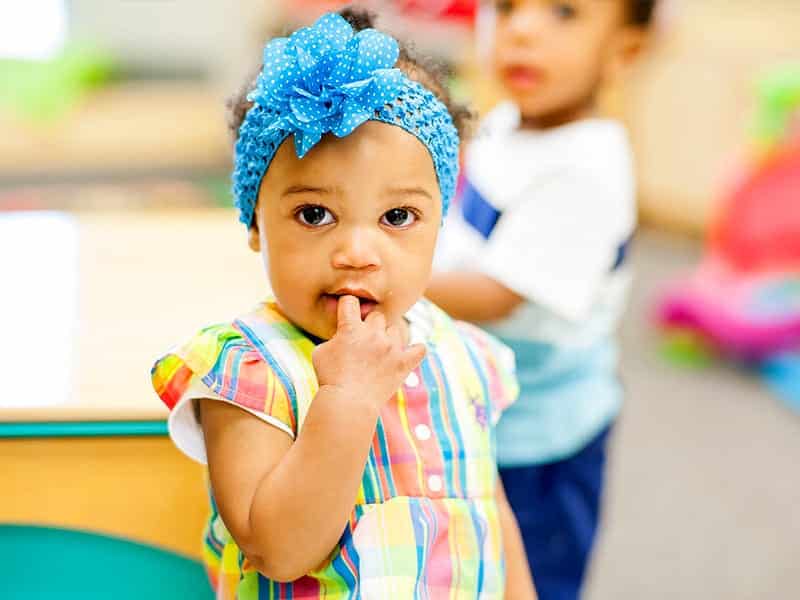Are there any specific cognitive or physical developmental abilities that art projects help support in early learners?
By holding different types of drawing materials your child is actively working on their fine motor development. Art also works a different part of your brain than science or math since there is a no wrong answer.
Breaking down art projects into steps helps develop cognitive abilities. For example, when we introduce painting, we teach the children the steps: dip- paint- clean, dip- paint- clean. We can even make it into a little song and dance to help the kids remember to dip their paint brush in the paint, paint and then clean off the brush to get a new color.
Art is also very scientific and mathematical. You are asking big important questions when you want to know what happens when you mix colors or layer textures or create patterns.
What at-home projects you would recommend for infants and toddlers?
This is the best time to introduce different art materials to your child. The more experience they have with crayons, markers and paints the better they will be able to express themselves as they get older.
- Focus on the sensory aspect and talk about texture.
- Put words to your child’s actions, “you are touching the cold, smooth red paint. It’s red like an apple or a firetruck. The red is very vibrant on the white paper.”
- Be playful and enjoy it. It won’t look like Pinterest, it will be messy.
- Be prepared with wipes, paper towels and clothing that can get dirty.
- Give your children a material and observe how they use it, what can you add to make the experience fuller or to extend their interest?
- Use age-appropriate materials like chunky crayons, no markers, non-toxic paint, play dough, contact paper, tissue paper.
What at-home projects you would recommend for children ages 3-5?
- Collaging
- Cutting (an important fine motor skill)
- Drawing pictures and describing the image
- Telling a story about their art
- Bookmaking
- Junk art with material from the recycling bin
What is your favorite aspect of teaching art to early learners and why?
It’s fun because you can learn about the child through their art. You learn if they mind getting messy and how they see the world around them. One student we had was so amazing with watercolors, every time we brought out the watercolors, she would paint the most amazing pictures. She struggles in other areas in the classroom but working with the paint gave her a confidence that was then reflected throughout the classroom.
You get to watch them create; we might not understand what they are painting or drawing but they do. For example, we might see a red circle but to them it’s a volcano. They get so excited about their creations.
Art is a form of expression, so it helps us be able to see deeper into their minds and what they find important. For example, we might give children wings, a body, black and yellow stripes of paper and glue and ask them to make a bee and to see the variations in what a bee will look like is amazing! Some kids focus on the stripes or the wings or even where they will place the eyes is fascinating.
Any other tips for incorporating art into children’s learning?
- It’s not about the product it’s about the process!
- Give them a provocation (example: have them draw a picture of their fish).
- Take paper and crayons everywhere you go and have your child record what they see around them.
- Have your child tell you a story about what they create.


